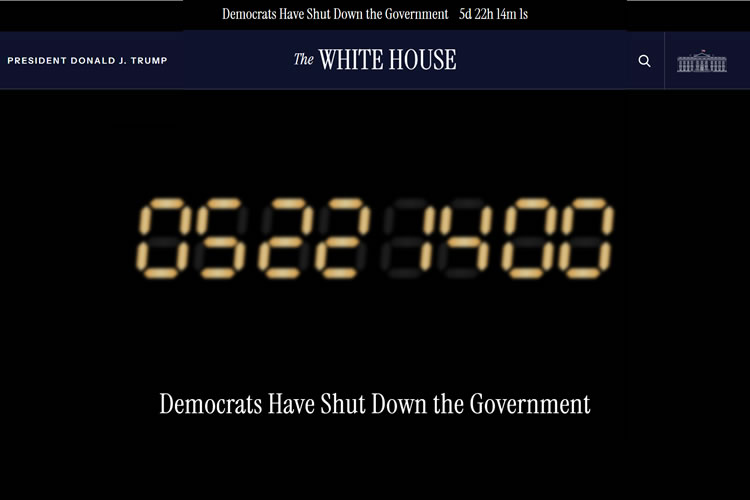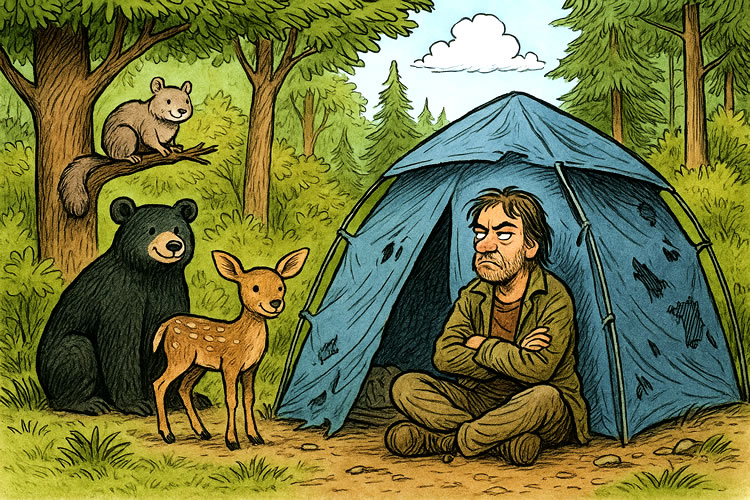When Congress fails to pass a budget or temporary funding bill, the federal government partially closes its doors. These “shutdowns” are now a recurring feature of American politics. Each side frames the standoff as a matter of principle, yet the larger truth is that shutdowns have become predictable, costly, and deeply revealing about the risks of government dependence.
The Standoff
In the current shutdown fight, Democrats are demanding that any funding bill include an extension of expiring Affordable Care Act premium tax credits along with a rollback of recent Medicaid cuts included in the GOP’s ‘One Big Beautiful Bill’ law. Republican leaders reject tying these policies to urgent government funding, insisting instead on a clean reopening before broader negotiations. At the same time, many Republicans — including the President and congressional leadership — claim Democrats are shutting down the government to fund health care for illegal aliens. That claim is technically true in the sense that Medicaid reimbursements cover emergency room care for all patients, including those in the country illegally. But the actual dollars involved are relatively minor compared to the far larger sums tied to ACA subsidy extensions. The real fight, then, is not over a sliver of Medicaid dollars, but over billions in ACA-related spending and whether those commitments will remain locked into federal budgets.
Such brinkmanship is familiar. Democrats argue shutdowns are manufactured crises that threaten ordinary Americans. Republicans argue shutdown leverage is one of the few ways to challenge entrenched spending. In practice, both sides know shutdowns are disruptive but still walk into them headlong.
A History of Shutdowns
The first modern shutdown occurred in 1976 under President Gerald Ford, when he vetoed a spending bill and triggered an 11-day funding gap. At the time, agencies did not fully halt operations the way they would after 1980, but it marked the beginning of shutdowns as political disputes rather than unavoidable process. Since 1976, shutdowns have happened more than 20 times, most lasting only a few days, but each one driven by partisan disputes.
Some of the most notable episodes:
- 1995–96 (Clinton vs. Gingrich): 21 days over spending and Medicare reform.
- 2013 (Obama era): 16 days, largely over opposition to the Affordable Care Act.
- 2018–19 (Trump 1st term): 35 days, the longest shutdown in history, triggered by border wall funding.
Despite the headlines, life for most Americans continued. Private businesses stayed open, state governments kept functioning, and the economy carried on, albeit with localized disruptions.
What Really Happens When Government Closes
Shutdowns do not stop everything. Essential services — Social Security, Medicare, national defense, air traffic control, and border enforcement — remain in operation. But “non-essential” federal workers are furloughed, typically without pay until a new budget is passed. When funding is restored, those workers receive back pay. Contractors and vendors, however, usually do not, leaving many small businesses with permanent losses.
Services such as passport processing, small business loans, and federal permits slow or stop. Research projects, inspections, and grant programs are delayed. Meanwhile, lawmakers themselves continue to receive their salaries, a detail that highlights the disconnect between political leaders and the people affected.
The Congressional Budget Office has estimated that shutdowns ultimately cost more than they save. Agencies must pay retroactive salaries and spend extra money restarting operations. The 2018–19 shutdown alone cost an estimated $18 billion in lost GDP, about $3 billion of which was permanent.
The “What If” Question
Imagine, for a moment, that Bernie Sanders had won the presidency and achieved his vision of expanding government programs dramatically. Every shutdown would then carry exponentially greater consequences. More citizens would be directly tethered to government checks, subsidies, and benefits. Each time Washington stalled, the disruption would spread more widely across society.
That scenario is not hypothetical in spirit. In New York City, Assemblyman Zohran Mamdani, now the frontrunner in the mayoral race, has championed a socialist spending agenda at the municipal level. His proposals to greatly expand public programs reflect the same philosophy: bigger government as the solution to social and economic problems. But history shows that when governments take on ever more obligations, they also become more fragile.
🍁 Make a One-Time Contribution — Stand Up for Accountability in Vermont 🍁
Detroit and Beyond
The case of Detroit illustrates what happens when governments overpromise. The city filed for bankruptcy in 2013, forcing teachers and retirees to accept cuts to pensions and benefits they had been guaranteed. What had once been presented as ironclad commitments vanished under financial strain.
This pattern is not unique to Detroit. Greece’s austerity crisis a decade ago, Argentina’s repeated defaults, and similar episodes worldwide all demonstrate the same point: when governments extend promises beyond their fiscal capacity, citizens who depend most on those promises are the first to suffer.
Shutdowns in Washington are a milder echo of this truth. They remind us that government is not infallible, and that reliance on it carries risks.
The Takeaway for Citizens
For most Americans, the immediate impact of a shutdown is minimal. If you are not seeking a passport, waiting on a permit, or working for a federal agency, you might not even notice. For those who are directly affected — furloughed workers, contractors, or families waiting on services — the stress is real.
The broader lesson, however, is about dependency. The more aspects of daily life are tied to government programs, the more vulnerable people are when those programs stop or shrink. Individuals who are not yet reliant on government services should treat shutdowns as a cautionary tale. Independence, private solutions, and diversified income streams may be more challenging to build, but they are more resilient when political institutions stall.
Nothing New Under the Sun
Economic history shows that these outcomes are predictable. From city bankruptcies to national defaults, from pension cuts to stalled services, governments that promise too much eventually hit limits. In that sense, shutdowns are not anomalies — they are reminders. They demonstrate that government can, and sometimes will, fail to deliver.
The Broader Lesson
Shutdowns reveal three key truths:
- Brinkmanship is baked into politics. Lawmakers know shutdowns are coming and know how to avoid them, but still walk into them for political leverage.
- Shutdowns are costly, not thrifty. They consume more money than they save, and citizens bear the brunt of disruption.
- Government dependency is risk, not security. The larger the reliance, the greater the shock when government stops.
For those who want more government, from Bernie Sanders’ national platform to socialist proposals in New York City, shutdowns should stand as a warning. For those who are already dependent, options may be limited. But for others, the message is clear: true security lies not in expanding government promises, but in minimizing dependence on them.
Dave Soulia | FYIVT
You can find FYIVT on YouTube | X(Twitter) | Facebook | Instagram
#fyivt #GovernmentShutdown #FiscalResponsibility #PoliticalBrinkmanship
Support Us for as Little as $5 – Get In The Fight!!
Make a Big Impact with $25/month—Become a Premium Supporter!
Join the Top Tier of Supporters with $50/month—Become a SUPER Supporter!









Leave a Reply to Robert FireovidCancel reply